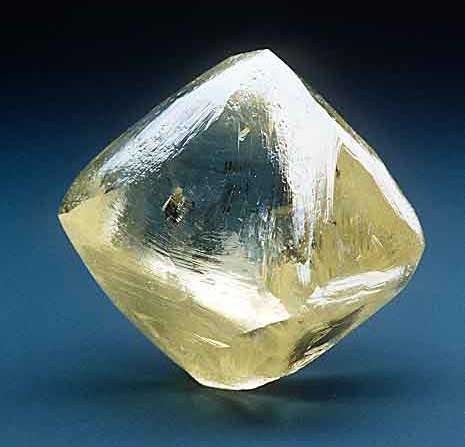Understanding the Durability of Diamonds
Hardness refers to a material’s resistance to scratching or abrasion. When it comes to diamonds, this property is particularly significant, as diamonds are known for being the hardest naturally occurring material on Earth. The hardness of a material is typically measured using Mohs Scale of Mineral Hardness, which rates materials based on their ability to scratch others.
Diamond’s Position on Mohs Scale
Diamonds score a perfect 10 on the Mohs scale, placing them at the top of the hardness scale.
This means that diamond can scratch all other materials, but it is unable to be scratched by any other known substance.
What Does Diamond Hardness Mean for Practical Use?
The hardness of diamond is one of the key reasons why it is the ideal choice for jewellery, especially in engagement rings and other precious items worn daily.
Key Benefits of Diamond Hardness:
Resistant to Scratching
The extreme hardness of diamonds ensures that they remain sharp and polished for many years without suffering from scratches, which would diminish their beauty and clarity.
This is especially important for diamonds set in jewellery, as they are exposed to wear and tear from daily activities.
Preservation of the Diamond’s Aesthetic Appeal
The ability of diamonds to maintain their brilliance and fire over time is largely attributed to their hardness. Since diamonds resist scratches, they maintain their faceted surfaces and polish, ensuring that the stone continues to reflect light optimally.
Long-Lasting Investment
Hardness contributes to the long-term durability of diamonds, which can be passed down through generations without significant wear. This makes diamonds an ideal choice for heirlooms and family treasures.
Resistant to Common Household Items
Everyday items such as keys, coins, and even some metals can scratch softer gemstones, but they won’t affect the surface of a diamond. This resilience makes diamonds perfect for engagement rings and wedding bands that are worn constantly.
Hardness vs. Toughness: Understanding the Full Picture
While hardness refers to a material’s resistance to scratching, toughness refers to its ability to resist breaking, chipping, or cracking. While diamonds are the hardest material on Earth, they are not the toughest.
Key Differences:
Hardness (measured on Mohs scale) only measures resistance to scratches, not the ability to withstand sudden impacts or stress.
Toughness, on the other hand, is a measure of a material’s ability to absorb energy and deform without fracturing.
Although diamonds are incredibly hard, they are brittle due to their crystalline structure. This means that diamonds can fracture if subjected to sharp impacts or if they experience extreme pressure in the wrong direction, especially along the cleavage planes where the crystal structure is weakest.
Example:
A diamond may resist scratches from a metal object, but it could shatter or chip if struck with a hammer or dropped on a hard surface.
Diamond Toughness and Its Impact on Cutting
When diamonds are being cut or shaped, a gem cutter must consider the diamond’s cleavage planes—the lines where the crystal structure is most likely to break under stress. A diamond is not just cut for its shape but also to preserve its toughness, as these cleaving directions need to be avoided during the cutting process to ensure that the diamond does not chip or break.
Facet Placement: When cutting a diamond, a skilled gem cutter will place the facets in such a way that they avoid the cleavage planes, thereby maintaining both hardness and toughness.
Precision and Care: The process requires great precision, as even the smallest error can result in a flawed or damaged stone.
How Does Diamond Hardness Compare to Other Materials?
Diamonds are not only the hardest gemstone, but also the hardest naturally occurring substance when compared to other materials. Here’s a look at how diamonds compare to other materials on the Mohs scale:
Material Hardness (Mohs Scale)
Diamond 10
Corundum (Ruby, Sapphire) 9
Topaz 8
Quartz 7
Orthoclase Feldspar 6
Apatite 5
Fluorite 4
Apatite 3
Calcite 3
Talc 1
Diamond’s Hardness Advantage
The next hardest material, corundum (rubies and sapphires), ranks at 9 on the scale, meaning diamonds are significantly harder.
Even common materials like glass or steel are much softer than diamonds, which is why diamond is commonly used in cutting tools for other materials.
What Does Diamond Hardness Mean for Jewellery Care?
While diamonds are extremely resistant to scratches, they still require proper care to prevent damage due to impacts or stress. Here are a few tips for ensuring the long-lasting beauty and durability of your diamond jewellery:
Avoid Hard Impacts: While diamonds are the hardest material, they can still chip or break if struck sharply. Be cautious when handling diamonds, especially when they are set in jewellery.
Store Separately: To avoid scratching, store diamonds separately from other jewellery or harder materials. Consider using a soft pouch or compartment in a jewellery box.
Regular Cleaning: Regularly clean your diamond jewellery to remove dirt or oils that could dull its appearance. Avoid abrasive cleaning methods that could scratch the diamond or the setting.

